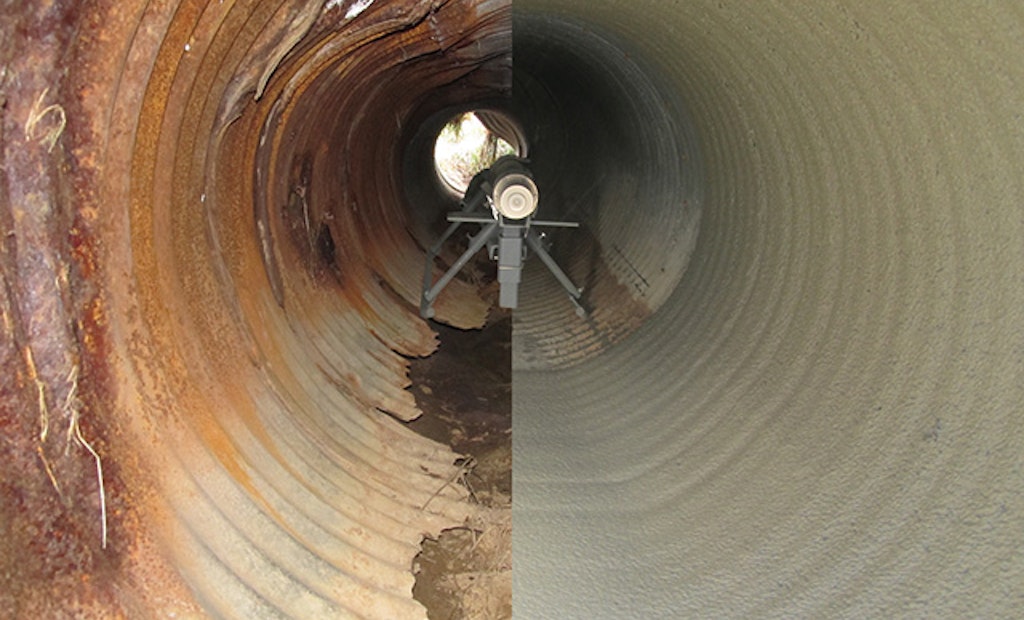As old infrastructure deteriorates over time, it becomes more crucial to ensure that pipelines remain strong and intact. Typical methods for fixing pipelines usually involve techniques that necessitate significant digging and operational downtime. Nevertheless applied pipe linings (SAPL) have come about as a remedy that provides shielding and restoration for pipelines without causing extensive interruptions. This innovation is increasingly acknowledged for its effectiveness and versatility, in types of pipeline networks ranging from water distribution systems to sewage lines and industrial conduits.
Spray-on pipe linings are all about coating the inside of a pipeline with a layer directly applied onto the surface. These linings are usually crafted from polymer materials like polyurea that create a layer, inside the pipe seamlessly. This coating serves as a shield to safeguard the pipeline against corrosion, chemicals exposure and physical harm. What makes SAPL special compared to techniques is its capacity to offer instant strengthening without compromising the flow capacity of the pipe. This enables the pipeline to preserve its effectiveness while prolonging its durability.
Spray-applied pipe linings have a benefit in their capacity to mold to irregular shapes and sizes found in older pipelines that were built many years ago and lack uniformity in shape and size measurements. Typical lining techniques like slip lining may encounter difficulties when dealing with pipes of diameters or with bends, in them.SAPL tackles this challenge by providing a spray on remedy that can adjust to the unique features of the pipe. SAPs flexibility shines when it comes to rehabilitating pipelines in city settings with hard to reach underground structures.
The process of applying SAP lining is quite simple for the job at hand starts with cleaning and preparing the pipe to get rid of any dirt or rust buildup on its surface.” Once thats done and the surface is all set up nicely ” the specialized equipment is used to spray on the lining inside the pipe.” The coating dries fast ” creating a protective layer that lasts.” Thanks to this drying feature, ” SAP lining is a popular choice for projects with tight schedules where downtime needs to be minimized. Often the pipe can be back, in operation a few hours after the lining is applied.
Spray-applied pipe linings have various options that are sometimes not fully considered during the selection process.Polyurea is frequently chosen for its toughness and ability to withstand challenging conditions.It provides safeguard against chemicals,wears and high temperatures, making it suitable, for pipeline uses. Yet polyurethane or epoxy can serve as alternatives based on the projects needs. Engineers can customize the pipeline lining to meet requirements by choosing from a variety of materials available for use, in different conditions to achieve the best performance possible.
SAPL stands out for its capability to prolong the lifespan of pipelines without requiring costly and intrusive digging work. In pipeline repair methods where extensive excavation is needed to fix pipes can be time consuming and expensive especially in crowded regions. Spray applied pipe linings remove the necessity for excavation by enabling repairs to be conducted from, within the pipe itself. This method that doesn’t involve digging trenches helps cut down on labor expenses. Lessens the disruption to nearby infrastructure—making it a great option for cities or locations, with restricted entry points.
Furthermore s SAPLC plays a role in tackling issues linked to pipeline maintenance by eliminating the requirement for digging up and discarding old pipes.This approach diminishes the carbon footprint linked to pipeline restoration projects. Additionally the components utilized in SAPLC, predominantly polyurethane,is engineered for durability and resistance to deterioration resulting in reduced repairs and replacements over time. This aids, in enhancing the long term sustainability of the infrastructure and minimizing the consequences of pipeline upkeep.
Spray-applied linings (SAPL) offer a solution for a range of pipeline issues, such as leaks and corrosion, while enhancing structural integrity in an often overlooked manner.The coatings’ seamless application guarantees protection across the pipe’s surface to prevent potential future challenges stemming from weak areas or uncovered spots. Ensuring a level of security is crucial in sectors that depend on the continuous supply of essential resources, like water and oil.
In discussions surrounding spray applied pipe linings the emphasis is often on their role in fixing and safeguarding pipelines; however there’s a rising curiosity in employing SAPL for fresh installations as well. When engineers add a lining to newly laid pipelines they’re adding an extra shield, against potential corrosion or harm. This proactive method not prolongs the pipelines lifespan but also cuts down on maintenance expenses in the future. It signifies a change in mindset, from fixing issues after they occur to maintaining pipelines to keep them in top shape for as long as they can be.
In summary spray on linings for pipes provide a cutting edge answer to the issues faced in restoring and safeguarding pipelines. Their capacity to adapt to surfaces endure severe conditions and minimize downtime makes them a crucial resource for upholding the durability of pipeline networks. With aging infrastructure posing challenges the call for effective and economical restoration techniques is, on the rise and spray applied pipe linings are poised to meet this escalating need. Spray on pipe linings are long lasting solutions, for both fixing existing pipelines and safeguarding new installations to guarantee lasting effectiveness and eco friendliness.

